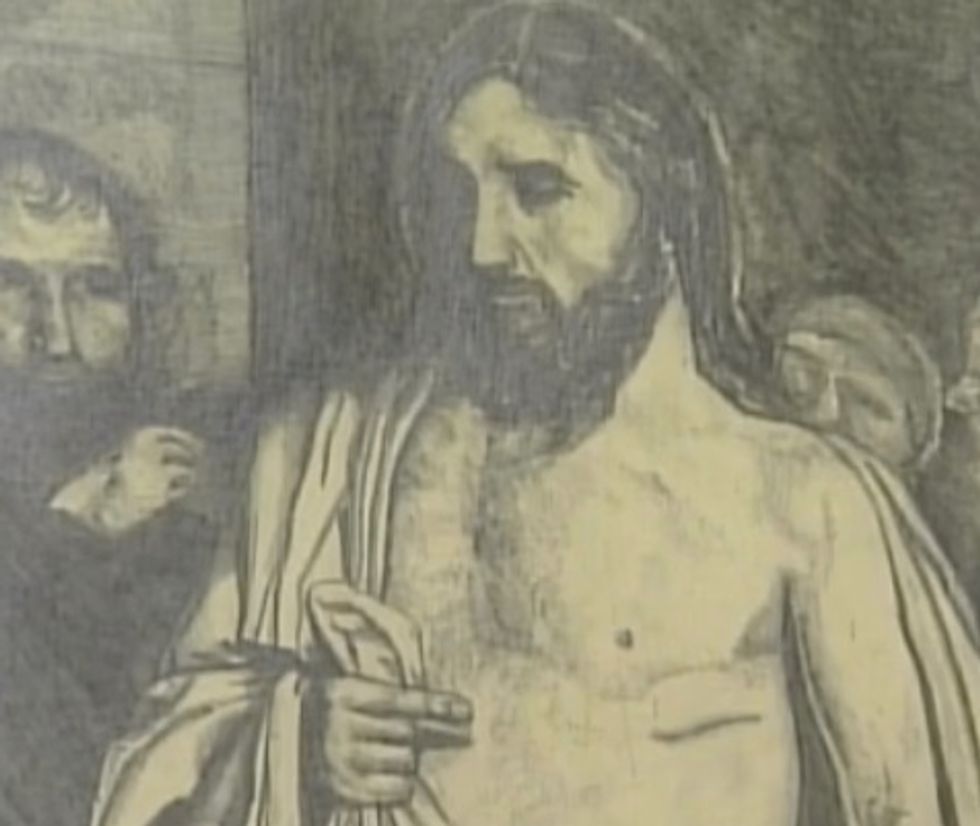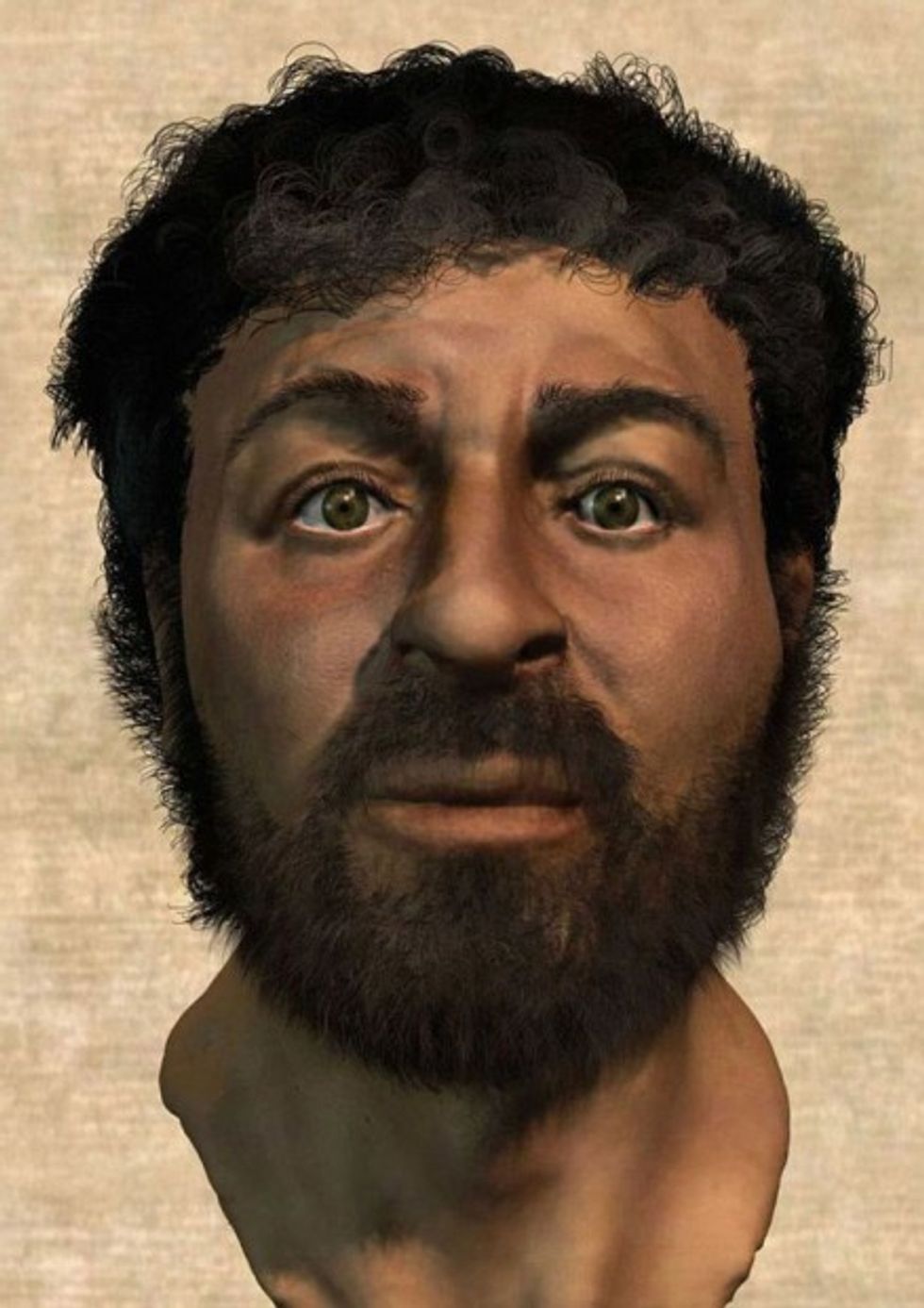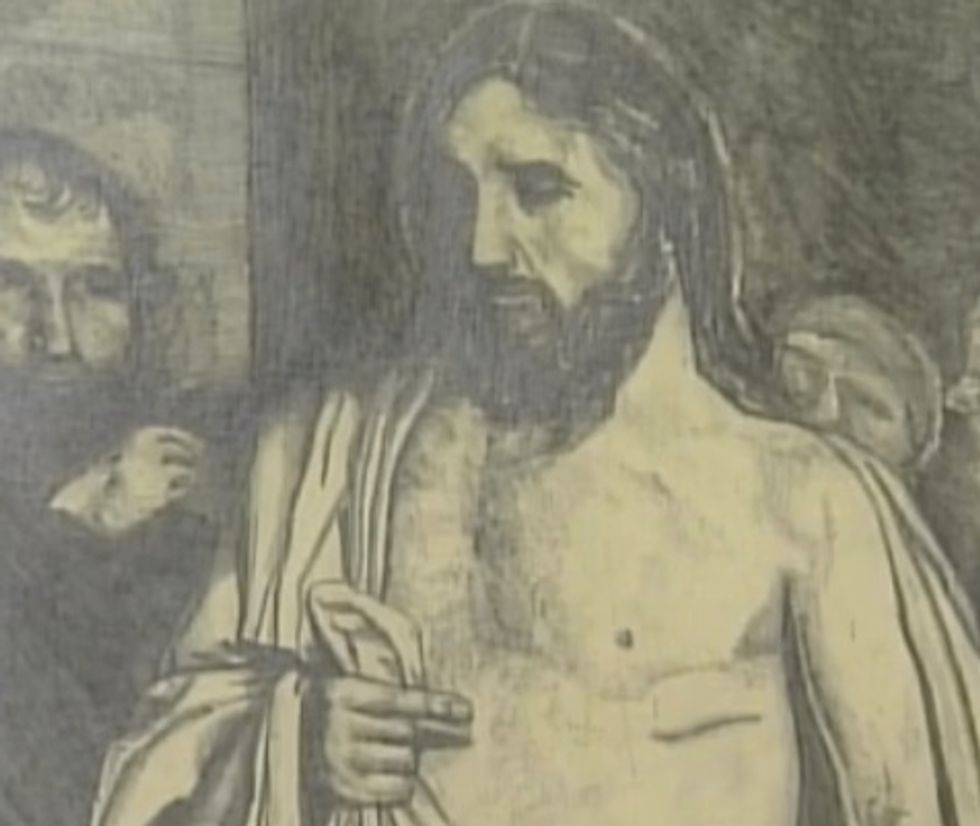
Shutterstock

What did Jesus of Nazareth really look like?
Artists, scholars and ordinary people in the pews have pondered that question for generations ... yet in the past few decades a number of surprising answers have been proposed.
In 2001, a retired medical artist, working for a BBC documentary, analyzed skull fragments from the Galilee area and other artifacts and offered a startling reconstruction of Jesus that shocked ordinary Christians.
According to the artist, Richard Neave, Jesus was very different from modern Europeans, likely a short, broad-shouldered man with a wide face, wide vacant eyes, a large, flat nose and broad lips.

Neave estimated Jesus was only about about 5 feet tall and weighed about 110 pounds. And he was bearded and had relatively close-cropped hair, not the shoulder-length hair seen in most Christian depictions.
Over Christmas, however, a professor of Christian origins and Second Temple Judaism at King's College, London, has reignited the debate. Writing for the BBC magazine, the professor, Joan Taylor, seeks to qualify and, in some cases, contradict Neave’s portrayal.
According to Taylor, it was not the case that all Jewish men in Jesus' time wore beards, although many did. Some did, some didn't. She points to images of Jewish men on Judaea Capta coins, issued by Rome after the capture of Jerusalem in AD 70, that show the male captives wearing short-cropped beards.
As for hair length, Taylor insists that the long, uncut hair usually shown in Christian iconography would normally be indicative of someone taking a Nazarite vow, promising to not cut his hair or drink wine for a specific period of time. At the end of the vow period, Taylor says, the Nazarite would normally cut his hair short in a special ceremony in the Jerusalem Temple.
It’s unlikely that Jesus was a Nazarite, however, because the Gospels repeatedly portray Jesus as drinking wine. Indeed, one of the accusations made against him was that he was a “glutton” and an wine-drinker (Luke 7:34) – proof that Jesus likely was not a Nazarite.
One quibble: The Gospels portray Jesus as being literally on the run with some of the authorities, such as the half-Jewish king Herod Antipas, seeking to kill him (Luke 13:31). Barbers and beard grooming may not have been at the top of Jesus’ priorities, Nazarite or not.
And what about Jesus’ facial features? What did he look like?

Taylor raises questions about Neave’s 2001 portrayal, arguing that the most accurate gauge of what a 30-something Jewish male looked like in Jesus’ era can be seen in near-contemporary paintings or frescos from the period.
She points to the depictions of Moses on the walls of the third century synagogue of Dura-Europos, located in eastern Syria, as a good indicator of what Jesus could have looked like – a man with a long, thin nose, short, curly brown hair and a close-cropped beard.
Taylor’s argument that the people in ancient Israel may have looked more modern than Neave’s portrayal could be buttressed by the discovery of an ancient mosaic on the floor of a large villa in ancient Zippori (Sepphornis), located just three or four miles from Jesus’ home village of Nazareth.
The capital city of Galilee in the time of Jesus, Zippori was widely considered the jewel of the Galilee region and was a thriving, beautiful city of perhaps twelve thousand people that would eventually offer such Greek amenities as synagogues, a theatre, bathhouses, a gymnasium and a long shopping street or cardo.
In the 1980s and 90s, stunning mosaics were discovered on the floors of villas and synagogues in the city, with inscriptions written in both Greek and Aramaic.
In one particularly luxurious villa, dubbed the Dionysius villa because of elaborate mosaics on the floor depicting people feasting, there is an unusual mosaic of a beautiful woman. Known as the Mona Lisa of the Galilee, the woman has a remarkably modern appearance and seems to be looking through time, with just the hint of a smile on her face.
She could well be an example of what a young Jewish woman of the time looked like – such as Jesus’ mother, Mary.
The one area in which Taylor’s reconstruction of Jesus differs the most dramatically from normal Christian portraits, as well as Neave's, concerns Jesus’ clothes. Most portrayals of Jesus, including in recent films and TV series, have him wearing long, rough-hew robes and brownish, cape-like garments.
In fact, says Taylor, Jesus likely wore a knee-length, Greek-style tunic, called a chiton, with colored bands, perhaps blue, running from top to bottom.
The wearing of long robes, Taylor adds, was actually a sign of wealth and high status – and Jesus criticized people who did so.
“At the time of Jesus, wealthy men donned long robes for special occasions, to show off their high status in public,” Taylor writes. “In one of Jesus's teachings, he says, ‘Beware of the scribes, who desire to walk in long robes (stolai), and to have salutations in the marketplaces, and have the most important seats in the synagogues and the places of honour at banquets’” (Mark 12: 38-39).
Over the shorter Greek tunic or under-garment, Taylor says, Jesus would have worn a long woolen cloak or blanket, a himation, that reached almost to the ground. Jewish men frequently would have worn the distinctive tallit, or Jewish prayer shawl, as a cloak. (Orthodox Jewish males wear a version of the tallit to this day.)
In a famous passage in the Gospel of Matthew, a woman afflicted with hemorrhages reaches out to Jesus and touches the “fringe,” or tzitzit, of his garment (9:20), almost certainly a reference to the tallit. This type of garment is indeed found on the figure of Moses in the synagogue paintings of Dura-Europos.
What about a kippah, or Jewish head covering? On this score, scholars are more certain: Jesus almost certainly did not wear a head covering. According to Jewish experts, the custom of wearing a head covering (skullcap) arose in Babylonia in the third and fourth centuries of the common era -- a fact that can be seen, again, in the depiction of Jewish males (clean shaven and skullcapless) on the walls of the synagogue at Dura-Europos.
In the end, Taylor offers a helpful correction to Neave’s allegedly “scientific” portrait of Jesus. She seems on firmest footing when it comes to Jesus’ clothes – and these, indeed, are dramatically different from traditional Christian portrayals.
The only caveat I would offer is that the mid-third century AD, which is when the Dura-Europos and Zippori images were created, are still 250 years distant from Jesus' time.
When we think of the powdered wigs, tricorn hats and "hose" of Revolutionary-era America, we may be a little cautious about drawing too many conclusions about clothing and appearances hundreds of years apart.
–
TheBlaze contributor channel supports an open discourse on a range of views. The opinions expressed in this channel are solely those of each individual author.